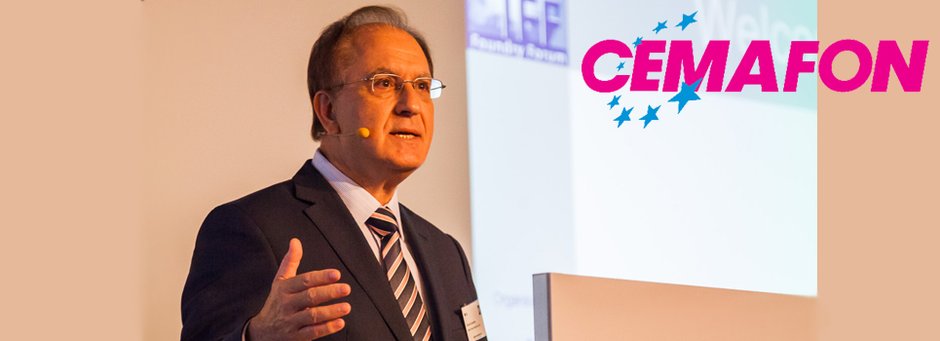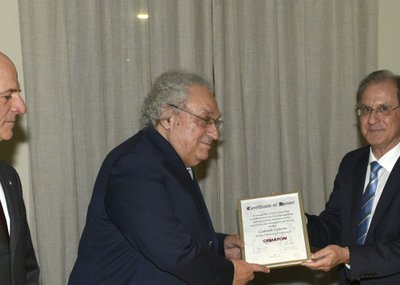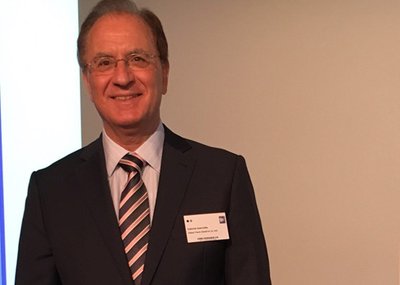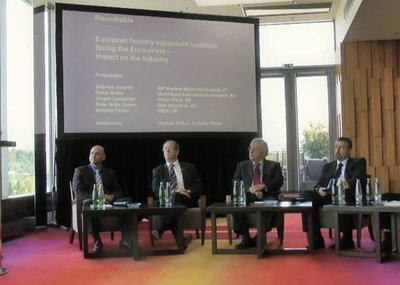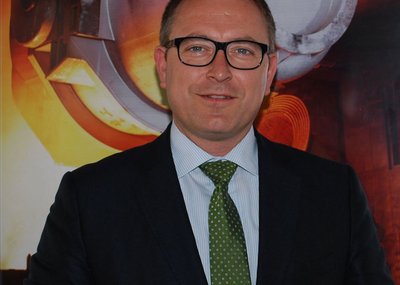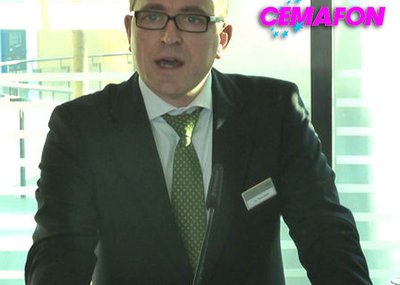Politically, socially and economically, changes are currently taking place the complexity and scope of which is now slowly becoming noticeable in Europe.
Dr. Ioannis Ioannidis, we would be delighted if you, as the new President of the European Foundry Machinery Association CEMAFON, would share with us your views on the projected industrial changes from the perspective of the foundry supplier industry.
Thomas Fritsch (Foundry-Planet Ltd.) (FP):
Politicians in Europe are urgently demanding new drive technologies for vehicles, electromobility is now becoming big business, China intends to take on a leading role in e-mobility and India is planning to become a country with 100% e-cars by 2030.
How far have we really come and what does this mean for the foundry industry?
Dr.-Ing. Ioannis Ioannidis (CEMAFON President) (Dr. Ioannidis):
Electromobility is only at the start of its technological change and will record good growth rates over the next few years. Provided that the electricity supplied is generated from alternative energy sources, that is a logical ecological direction to go. For the foundry industry, there are new fields of application opening up that do far more than compensate for old ones.
(FP): With electric drives, hybrid drives and smaller combustion engines, according to a forecast to 2030, doesn’t it appear that the number of cast parts in particular will be falling or do you see compensating opportunities?
(Dr. Ioannidis): I see more than just compensating opportunities. We will have a higher absolute number of vehicles and we will also have more new interior and exterior parts because of the trends towards autonomous driving and digitisation.
(FP): Are there new areas for cast components besides battery fixings, housings for control units or, for instance, e-wheel hub motors?
What structural components do you foresee and which industries besides automotive have the greatest future potential?
(Dr. Ioannidis): There are new business areas for cast components in the exterior sector and in particular in the interior sector. With structural components, there are also some further interesting approaches from a materials perspective.
With the advent of digitisation, the automotive sector and electronics and, for instance, safety technology will offer new opportunities.
(FP): How is coordination between political demands, feasibility and industrial compatibility working out for European machine manufacturing?
(Dr. Ioannidis): There are sufficient opportunities for an understanding on how to retrospectively formulate pragmatic, contemporary solutions and to adapt what has been determined.
(FP): What guarantees and promises are there from OEMs and politicians about transition periods and future production processes, how closely is machine manufacturing involved in these processes if in future fewer individual cast components and more modules are demanded?
(Dr. Ioannidis): Major trends can be detected well in advance, so in fact there is sufficient time to act. Here machine manufacturing is very much on the ball, so assemblies or moves towards larger functional integration can be implemented relatively rapidly.
(FP): If we consider the development of additive manufacturing, would you categorise 3D printing as a process relevant to casting and how do you currently assess this development for the sectors of core manufacturing and metal printing?
(Dr. Ioannidis): 3D printing is another opportunity for combining existing knowledge with modern manufacturing principles and thereby creating new approaches. Nevertheless, it is also necessary to let go of old design methods in order to follow new approaches with 3D printing. Well-thought-out and redesigned structures will lead to excellent results in casting and machine manufacturing.
(FP): At the moment, global policy is characterised less by decisive goal-orientated action than by irritation, social division and protectionism.
North America has voted, European core countries such as France, the Netherlands and Germany are voting for new parliaments and a united Europe seems more threatened than ever before. Is this the hour of European associations like CEMAFON? What influence can CEMAFON exercise and what message would you give to European machine manufacturers and suppliers to the foundry industry, foundries and buyers of cast parts for 2017?
(Dr. Ioannidis): Europe is our opportunity. We have the biggest economy in the world. That must be made clear to everyone. With it, we have an opportunity to achieve a great deal by integration and joint action. So all associations fulfil a meaningful task, however small it may be. We should look forward to 2017 with confidence and we must pursue long-term developments. That’s our advantage over everyone else!
Partner
Foundry Corporate News
Topic Automation
Topic Chemicals
Topic Consultans
Topic Coremaking
Topic Discharging, Decoring, Fettling, Finishing
Topic Enviroment, Energy & Safety
Topic Heat Treatment
Topic IT-Solutions
Topic Melting Shop
Topic Metals & Alloys
Topic Moulding
Topic Patternmaking, mouldmaking and tooling & Rapid Prototyping, rapid tooling
Topic Plant Technology, Equipment
Topic Pouring, Gating, Feeding
Topic Pressure Die Casting
Topic Process Control Technology
Topic Refractories
Topic Sand & Binders
Topic Service Provider
Topic Simulation
Topic Testing, measuring & Quality Control
Topic Green Sand
Topic Lost Foam
"I see more opportunities and growth than just compensation for the future"
Reading time: min
[24]

